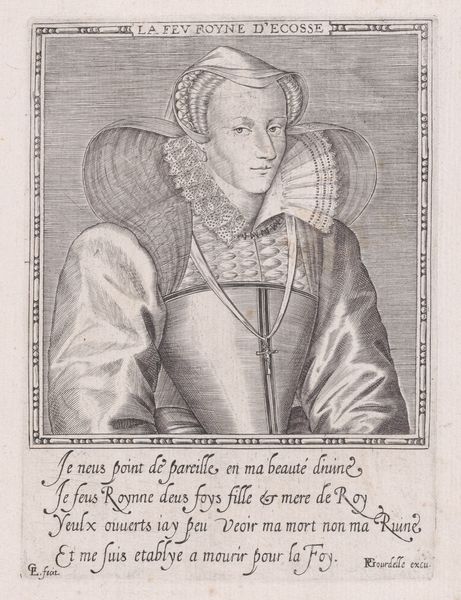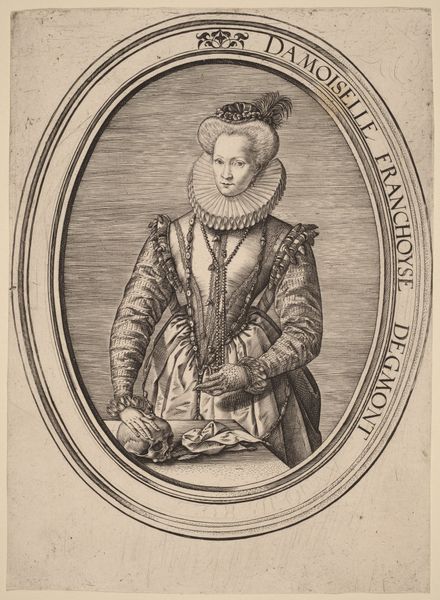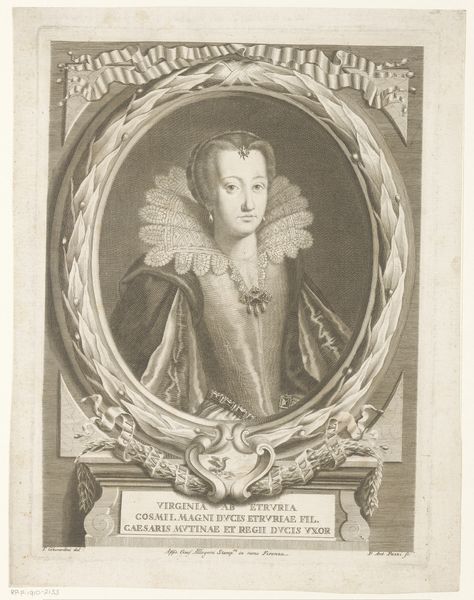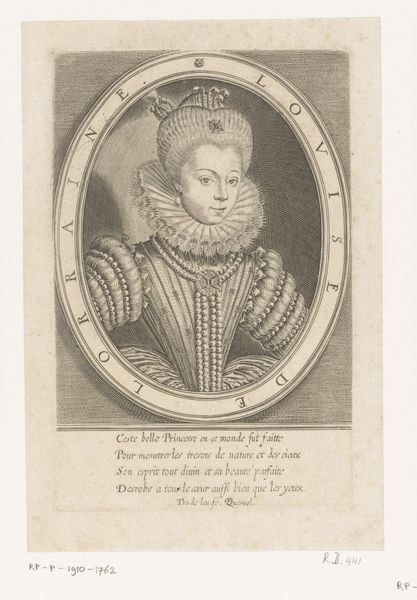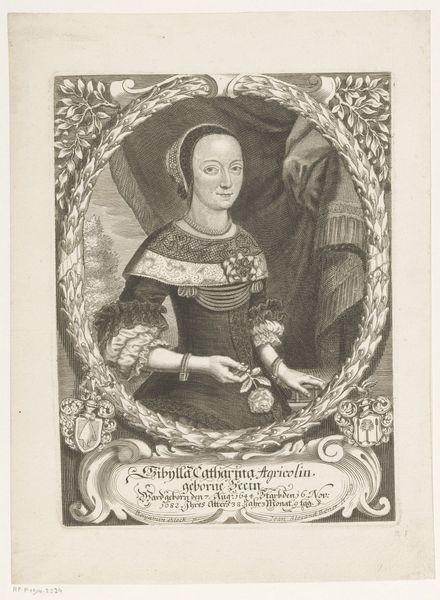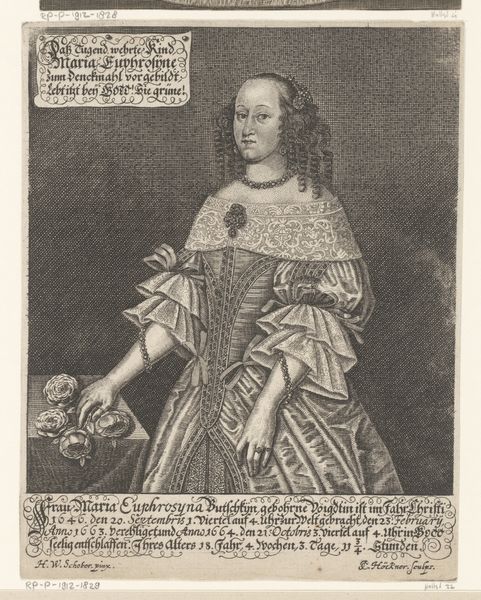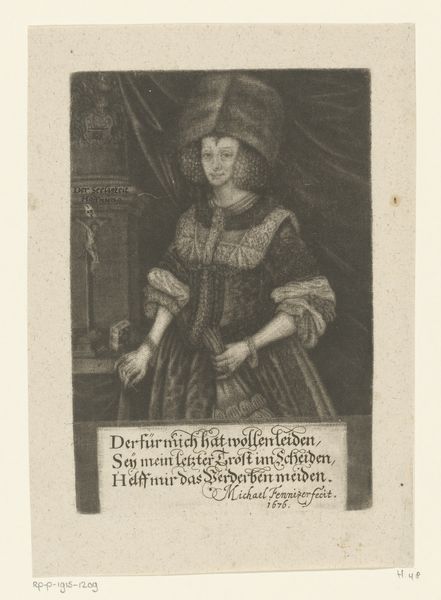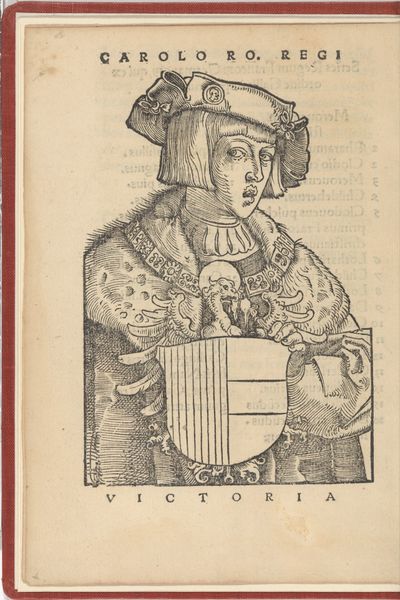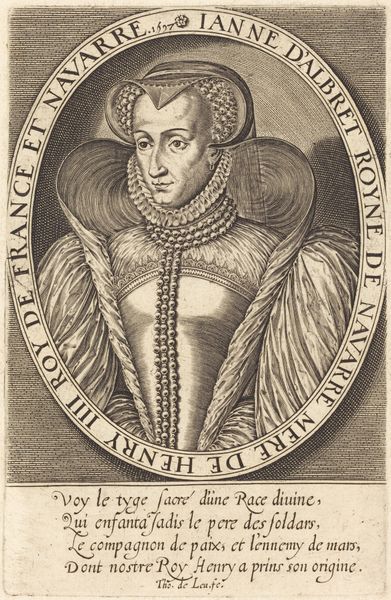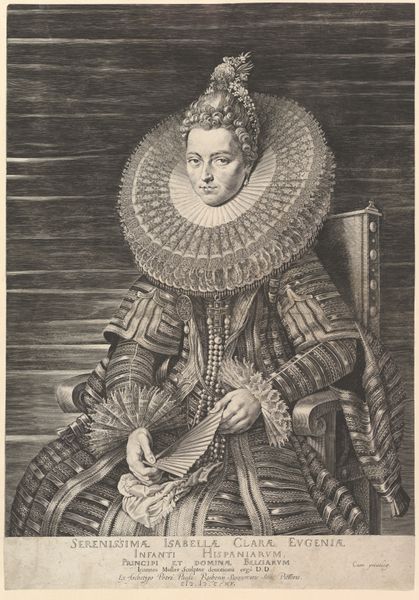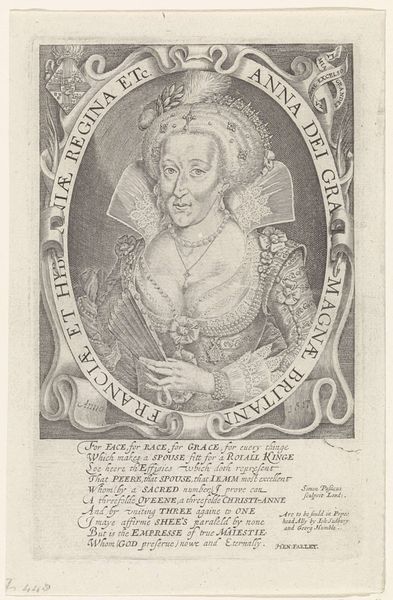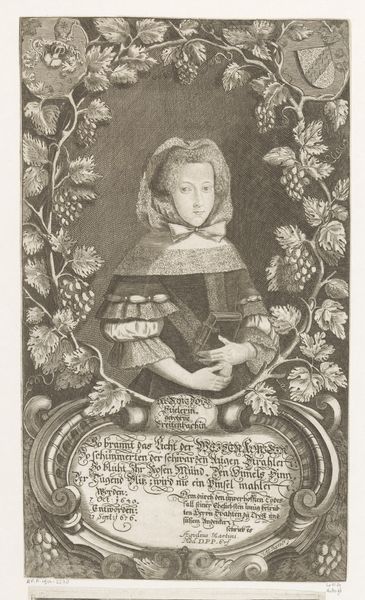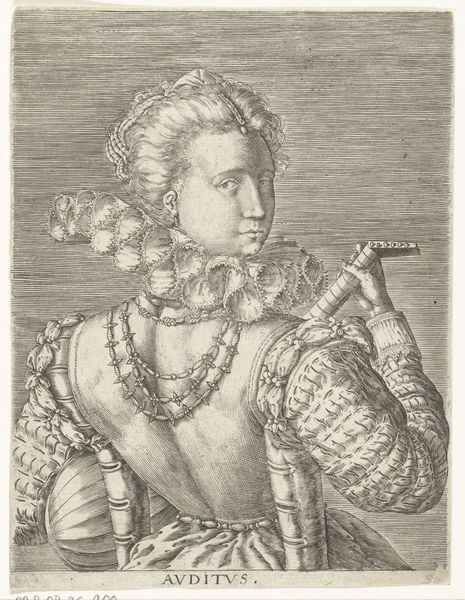
drawing, print, engraving
#
portrait
#
drawing
# print
#
history-painting
#
northern-renaissance
#
engraving
Dimensions: plate: 7 1/16 x 5 1/16 in. (17.9 x 12.9 cm) sheet: 7 7/8 x 5 3/4 in. (20 x 14.6 cm)
Copyright: Public Domain
Curator: Here we have Crispijn de Passe the Elder's "Queen Elizabeth I," an engraving dating to 1592. The print gives such detailed rendering of her garment! Editor: It's certainly...regal. My initial impression is of rigid formality. The stark lines, the almost obsessive detail in the ruff and dress—it feels designed to project power, less so to capture personality. The geometric patterns create this formidable image. Curator: I see it as more than just an exercise in portraying power. Consider the social context of printmaking at the time. Engravings like these made Elizabeth’s image reproducible and widely accessible. The circulation of these images played a key role in constructing her persona as the 'Virgin Queen', the staunch defender of Protestantism. Editor: A valid point. The material, the printing process itself, then, contributes to the iconography. But doesn't the composition itself still convey specific ideas? The crown, the orb, the scepter, her gaze... each element is deliberately arranged to communicate authority. It reinforces this idea of divine right. Curator: Indeed, and let's look at the verses included! Those lines contribute significantly to that propaganda. Her title, FIDEI CHRISTIANAE PROPVGNATRIX ACERRIMA or “a most fierce defender of the Christian faith" shows how it's about using material culture to solidify an image. The print becomes a commodity that shapes perceptions. Editor: So, both the intrinsic composition AND social deployment contributed. Perhaps my initial impression of formality neglected the layers beneath—how materials and social factors worked with design. Curator: Precisely! It underscores how an artwork’s meaning extends beyond its aesthetic elements, implicating broader structures of power and representation. Editor: I'll concede that focusing solely on form can sometimes obscure those vital, worldly processes. Curator: And considering process highlights that formal structure serves practical societal functions. A full picture, formed!
Comments
No comments
Be the first to comment and join the conversation on the ultimate creative platform.
